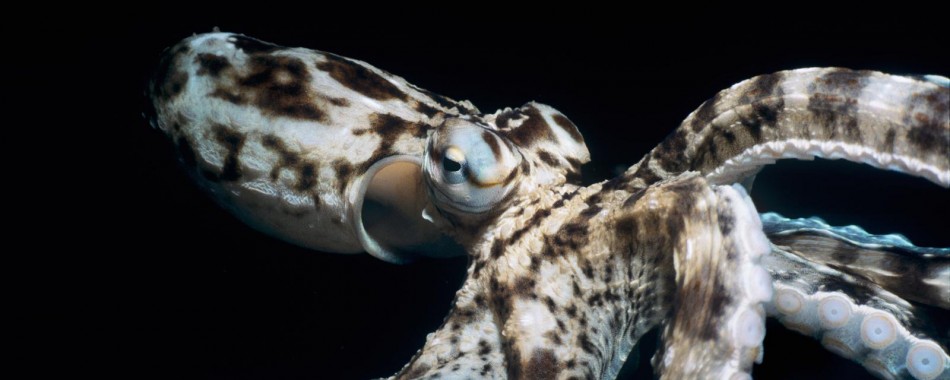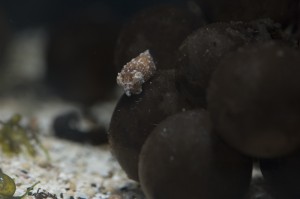How male octopuses avoid being eaten by hungry females

Presented by
Katherine Harmon Courage
Male octopuses have a big problem: female octopuses. Each male wants to mate and pass on his genes to a new generation. The trouble is, the female is often larger and hungrier than he is, so there is a constant risk that, instead of mating, the female will strangle him and eat him.
The males have a host of tricks to survive the mating process. Some of them can quite literally mate at arm’s length. Others sneak into a female’s den disguised as another gal, or sacrifice their entire mating arm to the female and then make a hasty retreat.
It’s all very macabre. It’s also a paradox. Octopuses are some of the most antisocial, unfriendly animals alive. Yet their bodies have evolved in such a way that they must mate in the most intimate way possible: the male has to insert his sperm directly into the female’s body using one of his arms. The resulting mating practices are not just a curiosity: they are a window onto how octopuses have evolved into the creatures they are today.

Octopuses and their close cousins the squid all belong to a group of animals called cephalopods. Both are actually molluscs, making them close relatives of oysters and limpets, but they have lost their shells.
Octopuses tend to be profoundly antagonistic towards each other. Unlike gregarious animals like dolphins, they appear to see their own kind primarily as competition, and sometimes food.
There’s always the threat of cannibalism
Squid, which are downright social by comparison, mate in a distinctly unromantic way. A male squid swims by and deposits sperm in one quick move outside of the female’s body. She can decide later whether to accept it.
But not so the octopus. “Octopus mating is definitely different than other cephalopods,” says marine biologist Jean Boal of Millersville University in Pennsylvania. The male must deposit his sperm inside the female’s body, at the risk of his life.
“There’s always the threat of cannibalism,” saysRichard Ross of the California Academy of Science’s Steinhart Aquarium. (more…)


